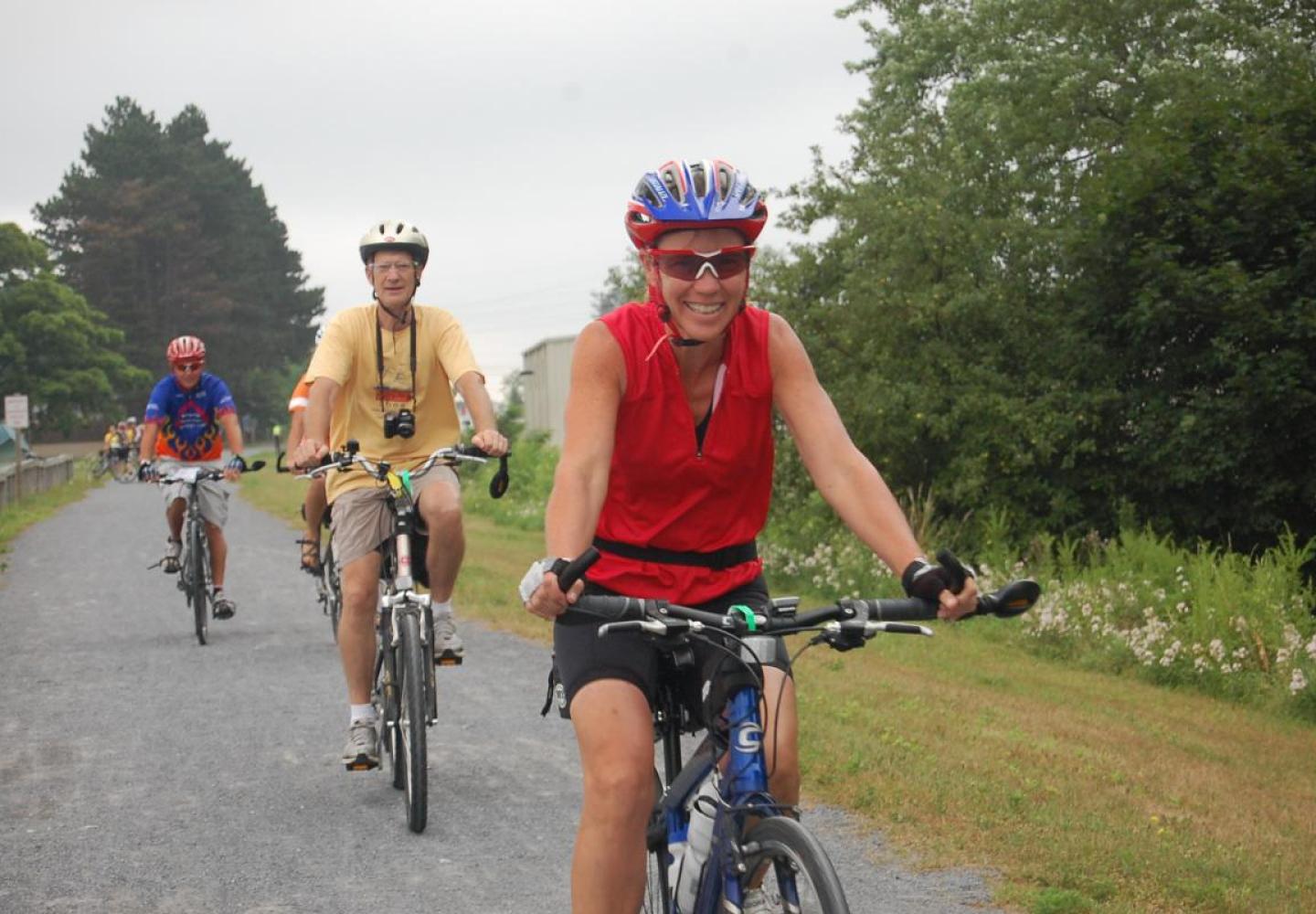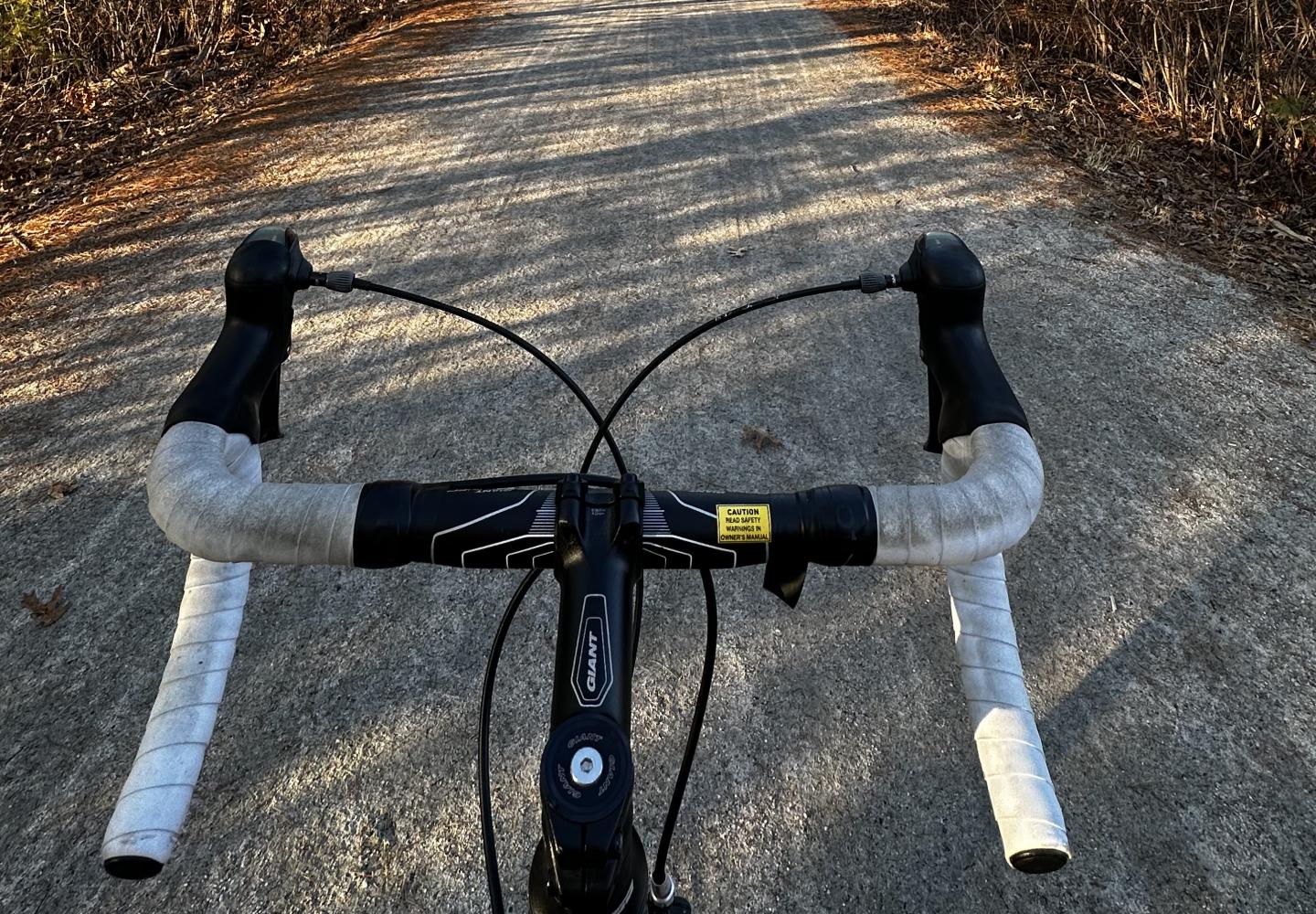ADK Rail Trail Surface Explained
What exactly will the riding surface of the Adirondack Rail Trail be, and will it work for all bikes? BikeADK's Phil Brown breaks it down.
Guest blog by Phil Brown
Last fall I rode my gravel bike on the Upper Charles Rail Trail in eastern Massachusetts. I had time to bike only eight miles, but it left me convinced: stone dust works!
Like the Upper Charles trail, the Adirondack Rail Trail will be surfaced with stone dust over most of its 34-mile length from Lake Placid to Tupper Lake. During the (seemingly endless) debate over whether to convert the Adirondack rail line to a trail, some people suggested that stone dust would not accommodate road bikes.
The Upper Charles Rail Trail proves them wrong.
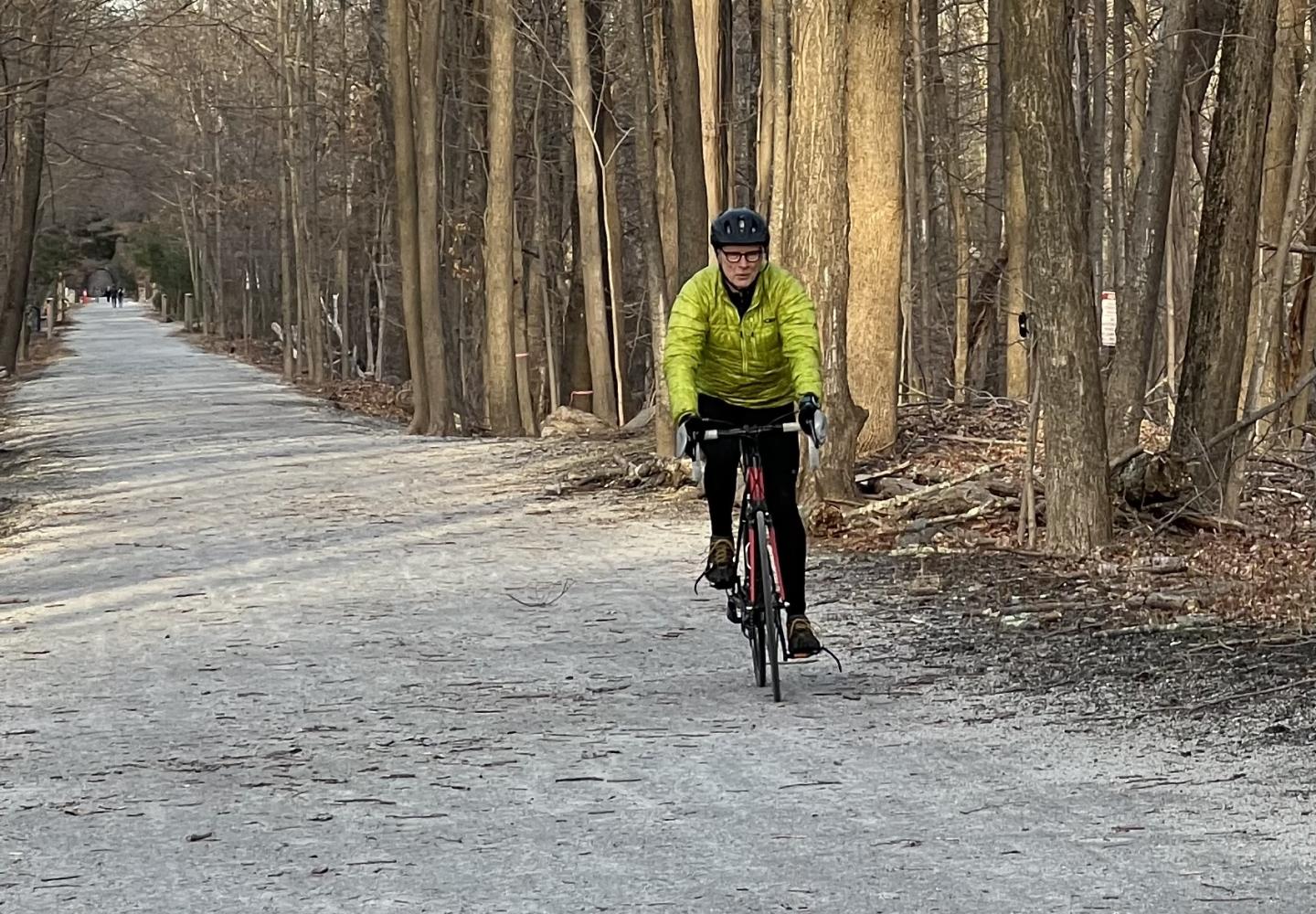
When visiting the trail in late November, I rode a gravel bike, which has wider tires, only because that was what I happened to be traveling with. The surface was so densely packed, however, that I had little doubt that road bikers could ride it with ease.
To test my hypothesis, I returned to the Upper Charles trail in January with my road bike, pedaling 7.5 miles on stone dust from Sherborn to Milford. I experienced no difficulties on the 15-mile round trip. I glided through woods and past wetlands with ease, sharing the trail with hikers, joggers and other cyclists (including some on road bikes).
The Upper Charles Rail Trail is not an anomaly. Tom Sexton, regional director of the Rails-to-Trails Conservancy, points out that there are hundreds of stone-dust trails throughout the United States that are suitable for road bikes. Parts of the Empire State Trail, for instance, are surfaced with stone dust and used by a variety of bikes. However, racing bikes with exceptionally skinny tires may not be suitable.
Stone dust is the fine residue created when machines break up rocks to create crushed stone. Typically, stone dust compacts to form a firm surface on trails.
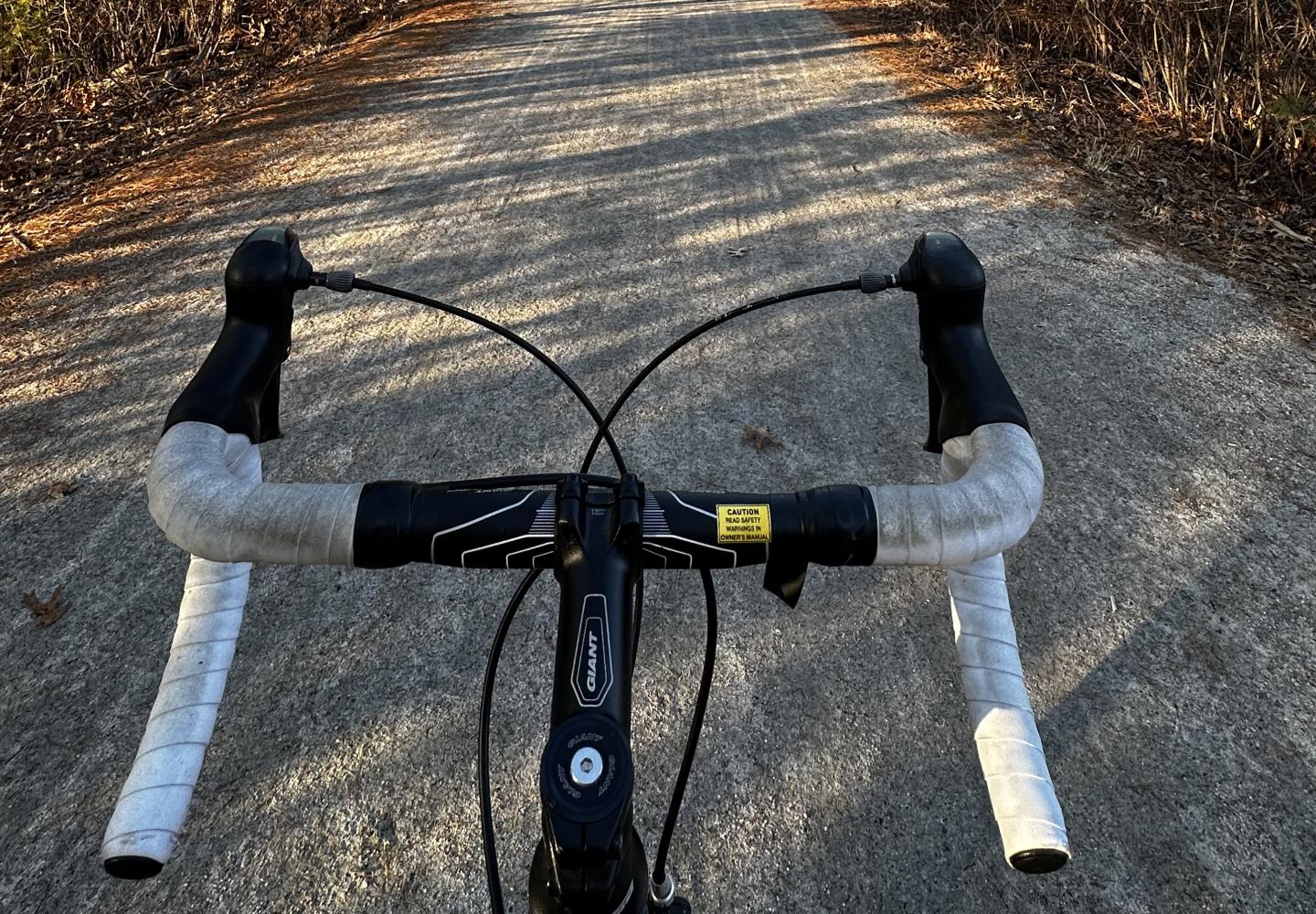
If the stone dust is loose, Sexton said, it may slow down a biker but not by much. In any case, he added, cyclists should not be pedaling all out on rail trails. “If a road rider wants to use a rail trail, they need to keep the MPH under 15,” he said. “If not, they should be on the road.”
Some cyclists don’t like that dust can accumulate on a bike, but Sexton called that “a personal thing.” I can attest that my bike and pants were spattered with dust by the time I finished my ride on the Upper Charles trail. My advice to people looking forward to cycling on the Adirondack Rail Trail: don’t wear your Sunday jeans and be prepared to wipe down your bike afterward.
On the plus side, Sexton said a stone-dust trail is easier to maintain than asphalt, which tends to buckle and crack because of tree roots and frost heaves. He added that asphalt trails need to be repaved after five to 10 years, “which takes money away from other trail development.”
Indeed, the state Department of Environmental Conservation has cited lower maintenance costs as one factor in choosing stone dust for the Adirondack Rail Trail.
Stone-dust trails do require periodic grooming or topping. In a 2017 report on the proposed Adirondack Rail Trail, Bergmann Associates states: “Erosion is the biggest enemy of stone dust trails. It is imperative that during the design and construction of the trail, surface drainage is accounted for and no water is allowed to flow over or across the constructed stone dust trail.”
The Upper Charles trail was mostly dry, but short stretches seemed prone to flooding. In one section--perhaps 100 feet long--bikes had created shallow ruts when the surface was wet and malleable. Consequently, the trail was not as smooth as elsewhere. No big deal, but it underscored the threat that water poses. The Adirondack Rail Trail passes by many wetlands and ponds, so flooding will be a concern if the trail is not constructed properly.
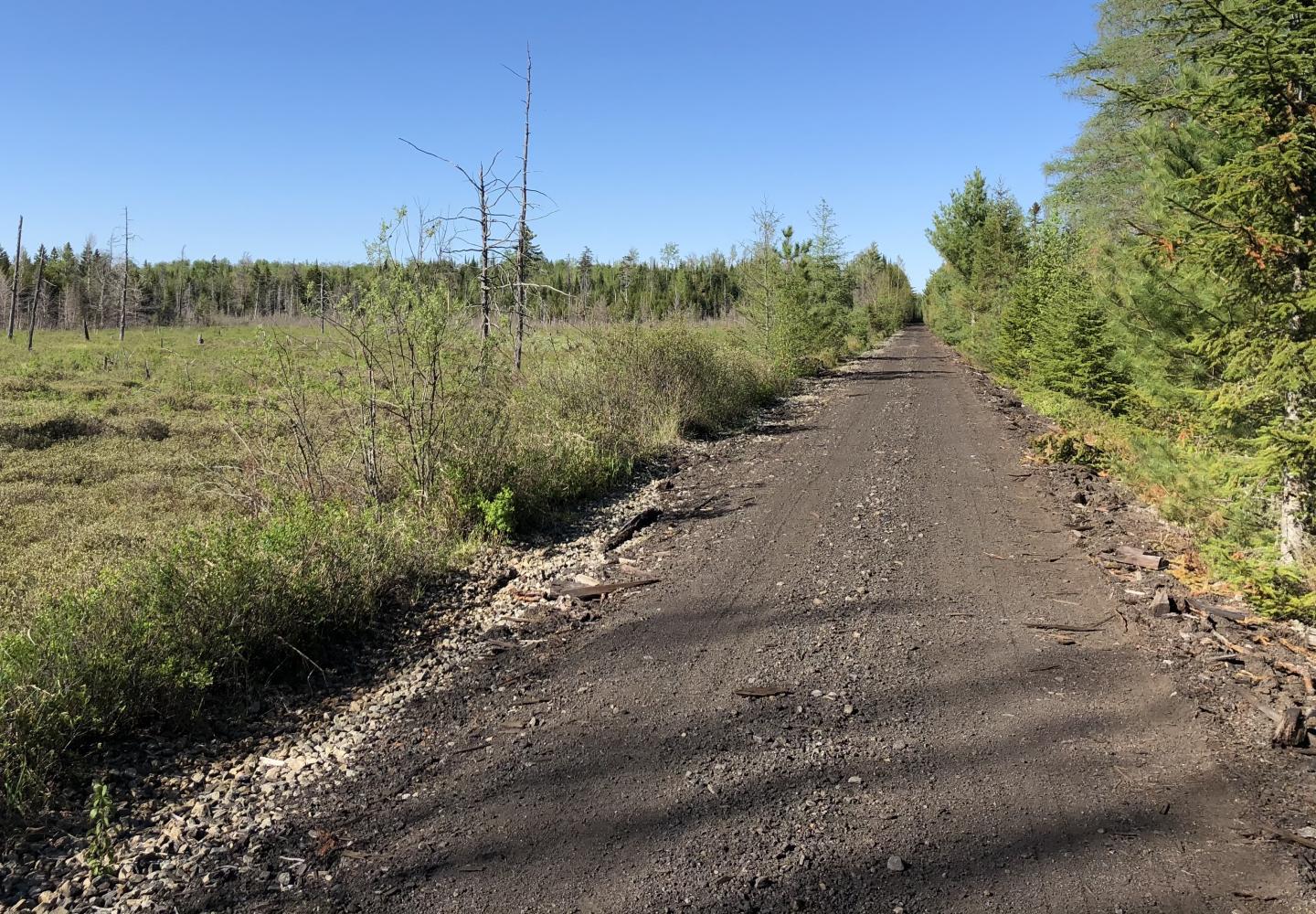
Another advantage of stone dust is that it has a more natural appearance than asphalt--an important consideration for a trail that will pass through the Forest Preserve. Asphalt would seem out of place in these wild lands. However, the trail will be paved within the village of Saranac Lake and on bridges.
Kubricky Construction Corp. of Saratoga County began work on the trail in early November, but its construction season lasted only until December 19. In the intervening six weeks, Kubricky worked on parking areas in Saranac Lake and Tupper Lake and removed tracks and ties at the Saranac Lake Depot.
This year, Kubricky will construct the section of trail extending from Lake Placid to the Saranac Lake depot--roughly 10 miles. This section will be closed while work is ongoing. The rest of the trail is expected to be completed in two phases, in 2024 and 2025.
DEC explained the construction process in an email to BikeADK. First, the ground will be stripped of organic material and shaped. Then a six-inch layer of coarse stone will be laid atop a geotextile fabric. The stone dust will be applied over the coarse stone. “Each layer will be compacted separately to ensure maximum density,” according to DEC.
“While the trail will be constructed with maximum accessibility in mind, including use for wheelchairs and strollers, road bikes with very narrow tires might find the conditions challenging,” DEC said.
Dick Beamish, one of the founders of the Adirondack Rail Trail Association, said it will be up to DEC to ensure that the trail is built to accommodate road bikes.
“An awful lot of people have road bikes and would love to use the trail,” he said. “It would be a shame if they couldn’t.”
Beamish and his wife, Rachel, have taken their hybrid bikes on more than 20 rail trails, mostly in the East. Most of the trails were not paved. “You can have an unpaved trail that’s firm enough and smooth enough for road bikes, and that’s what we need,” he said.
Build it right, and the road bikes will come.
